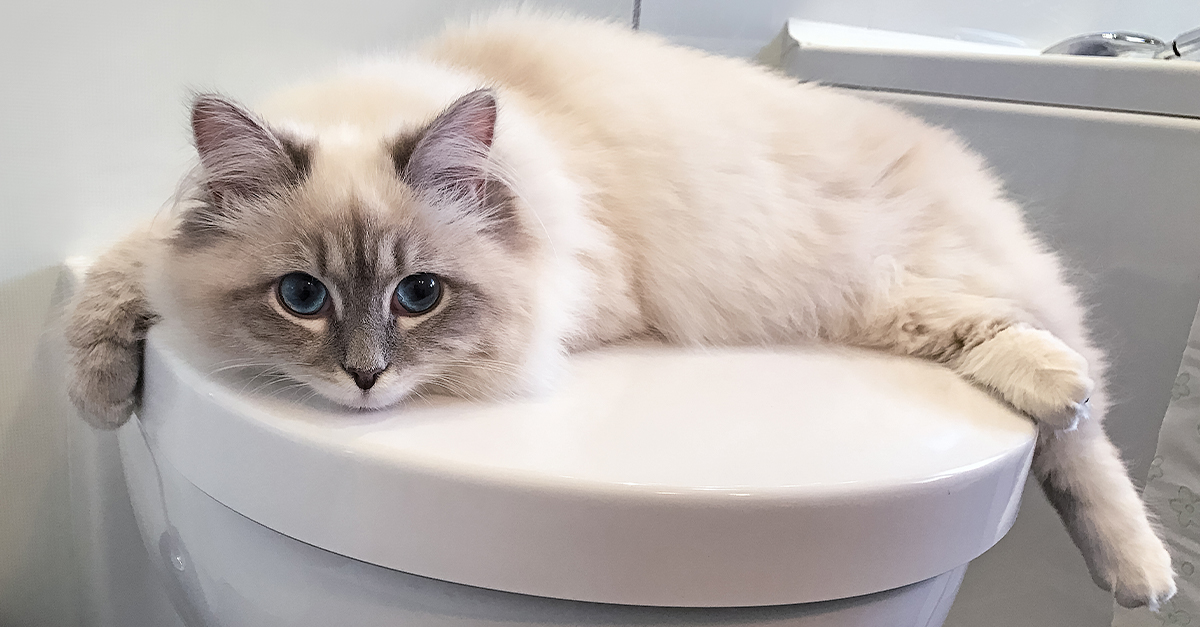Why Flushing Cat Poop Down Your Toilet Is Harmful - Tips for Correct Disposal
Why Flushing Cat Poop Down Your Toilet Is Harmful - Tips for Correct Disposal
Blog Article
They are making several great pointers on Can You Flush Cat Poop Down The Toilet? overall in this article just below.

Intro
As pet cat owners, it's important to be mindful of exactly how we take care of our feline friends' waste. While it might seem hassle-free to flush pet cat poop down the bathroom, this technique can have destructive repercussions for both the setting and human health and wellness.
Alternatives to Flushing
Thankfully, there are safer and much more liable methods to take care of pet cat poop. Take into consideration the complying with options:
1. Scoop and Dispose in Trash
The most common approach of throwing away pet cat poop is to scoop it into a biodegradable bag and throw it in the garbage. Make certain to use a dedicated clutter inside story and deal with the waste promptly.
2. Usage Biodegradable Litter
Choose biodegradable feline litter made from materials such as corn or wheat. These clutters are environmentally friendly and can be securely disposed of in the garbage.
3. Hide in the Yard
If you have a lawn, think about hiding pet cat waste in a designated area away from vegetable yards and water sources. Make certain to dig deep adequate to avoid contamination of groundwater.
4. Mount a Pet Waste Disposal System
Invest in an animal garbage disposal system specifically developed for pet cat waste. These systems utilize enzymes to break down the waste, reducing odor and ecological influence.
Health and wellness Risks
Along with ecological problems, flushing feline waste can additionally posture health and wellness threats to humans. Cat feces may consist of Toxoplasma gondii, a bloodsucker that can trigger toxoplasmosis-- a possibly serious ailment, specifically for expectant females and individuals with damaged body immune systems.
Environmental Impact
Purging pet cat poop introduces unsafe virus and bloodsuckers right into the water system, posing a considerable risk to marine ecosystems. These impurities can negatively impact marine life and compromise water quality.
Conclusion
Accountable pet dog ownership expands beyond giving food and sanctuary-- it additionally involves proper waste management. By refraining from purging cat poop down the commode and opting for alternate disposal techniques, we can lessen our ecological impact and safeguard human health and wellness.
Why Can’t I Flush Cat Poop?
It Spreads a Parasite
Cats are frequently infected with a parasite called toxoplasma gondii. The parasite causes an infection called toxoplasmosis. It is usually harmless to cats. The parasite only uses cat poop as a host for its eggs. Otherwise, the cat’s immune system usually keeps the infection at low enough levels to maintain its own health. But it does not stop the develop of eggs. These eggs are tiny and surprisingly tough. They may survive for a year before they begin to grow. But that’s the problem.
Our wastewater system is not designed to deal with toxoplasmosis eggs. Instead, most eggs will flush from your toilet into sewers and wastewater management plants. After the sewage is treated for many other harmful things in it, it is typically released into local rivers, lakes, or oceans. Here, the toxoplasmosis eggs can find new hosts, including starfish, crabs, otters, and many other wildlife. For many, this is a significant risk to their health. Toxoplasmosis can also end up infecting water sources that are important for agriculture, which means our deer, pigs, and sheep can get infected too.
Is There Risk to Humans?
There can be a risk to human life from flushing cat poop down the toilet. If you do so, the parasites from your cat’s poop can end up in shellfish, game animals, or livestock. If this meat is then served raw or undercooked, the people who eat it can get sick.
In fact, according to the CDC, 40 million people in the United States are infected with toxoplasma gondii. They get it from exposure to infected seafood, or from some kind of cat poop contamination, like drinking from a stream that is contaminated or touching anything that has come into contact with cat poop. That includes just cleaning a cat litter box.
Most people who get infected with these parasites will not develop any symptoms. However, for pregnant women or for those with compromised immune systems, the parasite can cause severe health problems.
How to Handle Cat Poop
The best way to handle cat poop is actually to clean the box more often. The eggs that the parasite sheds will not become active until one to five days after the cat poops. That means that if you clean daily, you’re much less likely to come into direct contact with infectious eggs.
That said, always dispose of cat poop in the garbage and not down the toilet. Wash your hands before and after you clean the litter box, and bring the bag of poop right outside to your garbage bins.
https://trenchlesssolutionsusa.com/why-cant-i-flush-cat-poop/

As an enthusiastic reader about Don’t flush cat feces down the toilet, I figured sharing that piece of content was appropriate. Don't hesitate to set aside a second to distribute this content if you liked it. Kudos for your time. Kindly come visit our blog back soon.
Maintenance Sign-Up Report this page